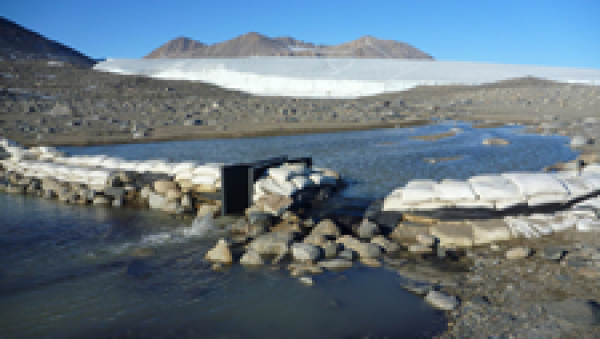This website uses a variety of cookies, which you consent to if you continue to use this site. You can read our Privacy Policy for
details about how these cookies are used, and to grant or withdraw your consent for certain types of cookies.
Ways to Screw Up a Flume Installation
There are any numbers of ways to screw up the installation of a flume. Below are just some of them.
Not Centering the Flume in the Flow Stream
The centerline of the flume should be along the centerline of the flow stream to be measured. Without flow conditioners, flow that this off angle to the centerline of the flume will not fully develop across the entrance of the flume. The result will be different head readings on different sides of the flume.
Additionally, the flow may never transition from subcritical to supercritical flow through the throat – making the flume useless in determining flow rate.
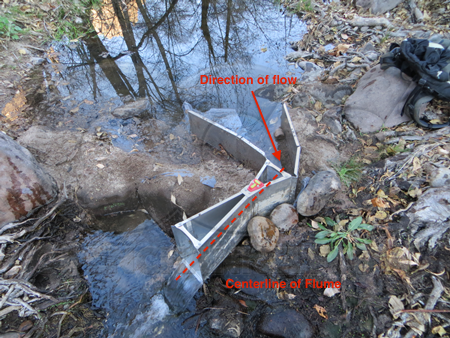
Not Having Uniform Flow
A corollary to the need to center the flume is the need to have the flow entering the flume is a well-developed manner.
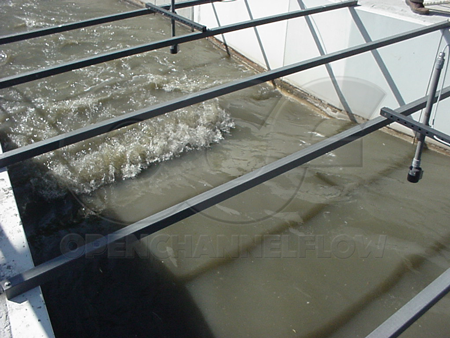
The flow should not be:
- Turbulent
- Surging
- Unbalanced
- Possessing a poorly distributed velocity profile
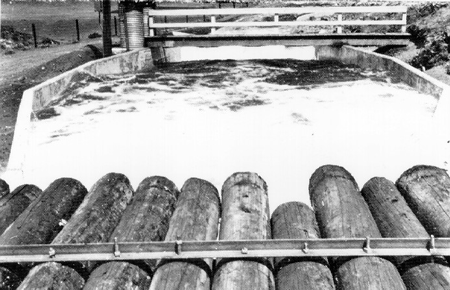
While flow conditioners are available for some flumes / types of flows, they are not available for all flumes / types of flows.
Having Supercritical Flow
Supercritical flow means that the Froude number is greater than 1. That is, that the flow velocity is greater than the wave velocity.
An analogy would be that supercritical flow is like supersonic flight – the object moves faster than a wave can propagate in the medium.
In supercritical flow disturbances can only move downstream. In subcritical flow, disturbances in the flow stream can travel both up and downstream.
Flumes develop curvilinear flow at a single point of measurement by accelerating flow through the throat from a subcritical state to a supercritical state. If flow enters the flume already in a supercritical state, then the flume will never properly develop the flow and the resulting level (indicated flow rate) at the point of measurement will be lower than would otherwise be present.
Excessive upstream pipe / channel slope is almost always the cause of supercritical flow. For most flumes, the upstream pipe slope should be between 2.5% (6-inch pipe) to 1.25% (48-inch pipe), depending upon desired Froude number, and pipe/channel roughness.
Having Full-Pipe / Pressurized Flow
In the explanation above of sub/supercritical flow, we talk about the flow always needing to be subcritical for a flume to function correctly. Similarly, the flow must always be under open channel conditions. These two requirements go hand-in-hand.
Open channel conditions exist when water flows with a free surface. Examples can be lakes, rivers, stream, irrigation channels, and pipes* (prior to the placement of the flume, piped flow CANNOT be full-pipe; it must have a free surface).

Full-pipe flow is pressurized flow, which in turn is supercritical flow, which as we have seen above, is not desirable. Think of a fire hose…a flume is never going to be able to measure that kind of flow, even if pressurization of the line only occurs intermittently.
Not Leveling the Flume
For a flume to operate correctly, it MUST be level from front-to-back and from side-to-side…without exception.
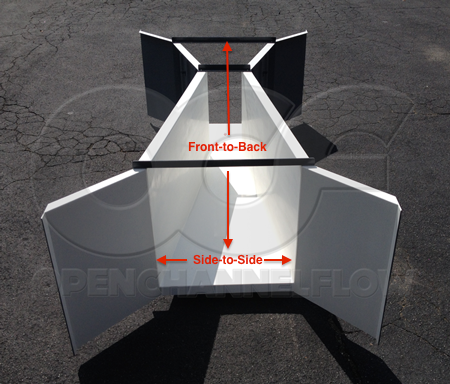
While researchers have developed corrections for Cutthroat and Parshall flumes that have shifted out of level over time, it is not acceptable for a flume to be installed from the beginning out of level. Additionally, there are no published corrections for HS / H / HL Type, Montana, Palmer Bowlus, RBC, or Trapezoidal flumes anyway.
Now these are only the some of the many, creative, and varied ways that we have seen flume installations screwed up. We don't want to discourage you though! Instlaling a flume properly can be easier than you think. Just take your time, think the thing through, and ask questions if you don't know. Remember, at Openchannelflow, we are here to help!
For other examples, check out More Ways to Screw Up a Flume Installation and Yet More Ways to Screw Up a Flume Installation.
Images: Water Resources Program (University of New Mexico), Brocade, US Bureau of Reclamation, Water Measurement Manual
Related Blog Posts
Explore more insights in our blog.

LOCATIONS IN ATLANTA, GA & BOISE, ID



